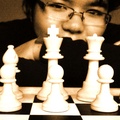>> Part 1
Maybe we find ourselves witnessing signs that the seventh Nikkei generation in Peru, though still suffering discrimination because of their physical appearance and manners of thinking and behaving, is becoming completely integrated in Peruvian society as well as in the globalization of individuality.
For that reason, the purpose of the Kenjinkai in a country such as ours has to be to clarify and perpetuate certain values like those of family, respect, punctuality, and so many others that we almost never see around us and that sometimes feel like strange forms of behavior because it’s so unusual for people to allow a pedestrian to cross the street when they’re driving, or to let – with patience – an elderly person go down the stairs ahead of them, or to demonstrate respect for the handicapped.
Those are universal values that are being lost; they represent the Nikkei “aggregate value,” which should become ingrained in the ways of acting and thinking of the community for they are the same or similar values that we have, at the very least, heard of from our grandparents. Since we have been exposed to them before, they can be more easily assimilated. They’re not something new.
VALUES
Nowadays, divorce is so easy that we must struggle to avoid the dissolution or tearing apart of our own families because of selfishness or materialistic desires. Responsibility is hard to find in the workplace, while the stench of mediocrity can be smelled every day.
Punctuality, as a value that hails from Old Japan, should go beyond its origins to become common use in place of the “Peruvian time” transmitted and endorsed as a demonstration of smartness … cunning … ignorance. Respect for all, not only for those who are older, should start at the crib, irrespective if the person comes from a rich or a poor background -- insipid discrimination. Respect for oneself, which can be radiated to all others. Change starts from within; if one can’t understand the meaning of change one becomes a mere follower, a sheep-like form of behavior that eventually fades away.
Today, the purpose of the Kenjinkai must be globalized, though not in its commonly accepted view – but to the contrary, as it’s actually applied. In other words, to try to avoid the loss of values that globalization is making us forget. I present it in this manner because if I talk about an anti-globalization approach, whatever that means, I’ll be opposed by both technophilics and the media.
So, the purpose of the Kenjinkai is to put itself ahead of the usual tides of misfortune and slovenliness, while focusing on strengthening the individual … for globalization is, in truth, individualization. (In other words, a dichotomy induced by means of basic necessities left unsatisfied and desires sown in a credulous environment where one doesn’t judge so as not to be judged.)
The community is neither exempt nor protected from those planetary changes and for that reason we have to treasure the aforementioned values – they’re old, yes, but those values preserve the unity of the people while leading to real progress and development within the community, within the group: those are the values and evaluations (the individual is more important than his money, not vice-versa) that causes a group of people to go looking for a lost person, to join forces for an event to collect funds for a sick family member, to focus the attention on a problem confronting an institution of the community so that everyone can try to come up with solutions.
Thus, I put forth a point of view that is more open than previous ones, even for myself, because social tools must be multifaceted in order to evolve; they must be continually transformed so as to avoid becoming stale and covered with cobwebs, and thus lost in time – freeing space for images that are new, colorful, and seductive, but thoroughly devoid of content.
For that reason, the Kenjinkai cannot continue to be associations tied to a prefectural origin – a concept that commemorates 100 years among us and that can be considered something ancient. Instead, they must celebrate the common origin that we the Nikkei have through our unity, so discussed and made use of at the beginning of the immigration period and in times of crisis, as well as our inherited values that have been lost in “First World” countries submitted to the rules of consumerism and not those of the family.
If this Union – the name of our representative sports complex – helped the immigrants who suffered so much, it’ll also be of use to us who are currently suffering even if we remain unaware of it because we try to compensate for it – even before we actually feel anything – with our credit cards.
Therefore, what united the immigrants who were alone in an environment both hostile and unknown can unite the Nikkei in our Information Age – not in the manner used in earlier times, so we won’t come across as antediluvians, but adapted to the personal and collective interests of our current era, which has more phobias than the past though it also offers more opportunities.
It’s not easy to explain it verbally or in writing, but nothing is impossible if a large enough group of people sets out to accomplish a task; the others will join in. Who will plant the first seed?
© 2009 Victor Nishio Yasuoka






